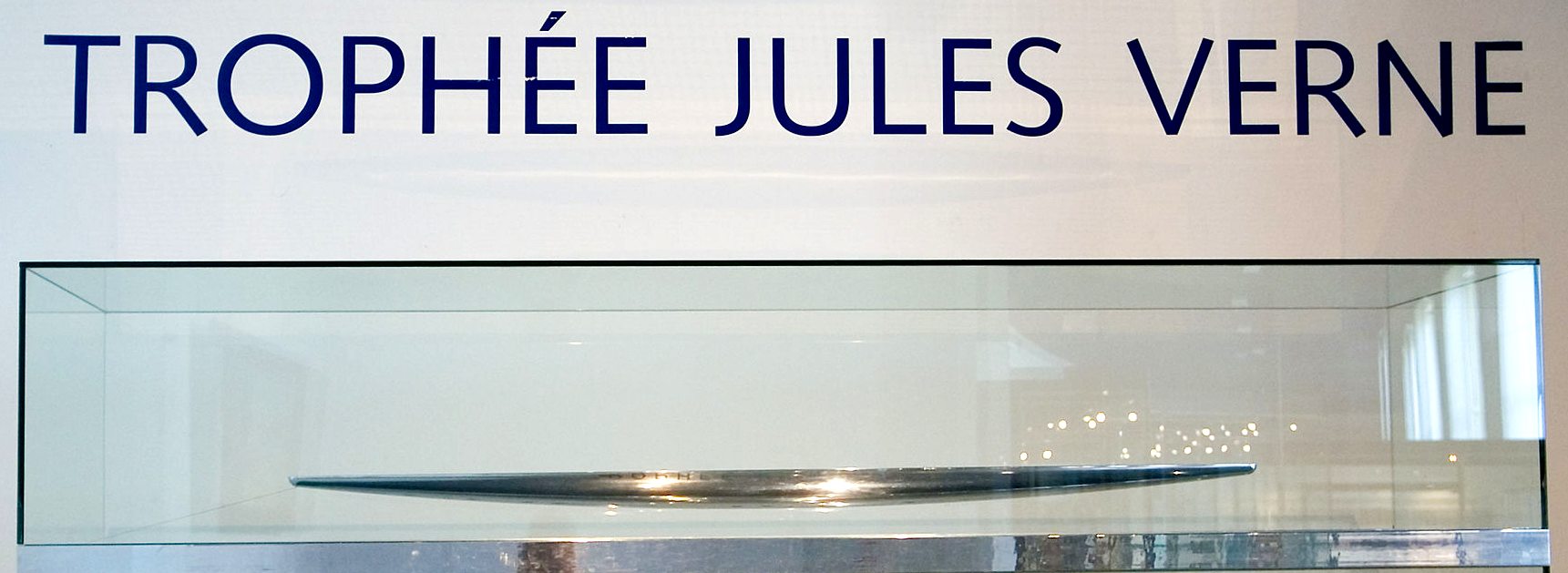|
TROPHÉE JULES VERNE
SAILING CIRCUMNAVIGATION TROPHY
Please use our A-Z INDEX to navigate this site or return HOME
|
|
|
SAILING RACE: The official language of the “Jules Verne Trophy” is French. The French version of these rules shall prevail over any other version in other languages.
|
|
|
|
|
The value of this trophy is not so much in the raw materials or time taken in crafting, it is due to the unique nature of the design. All of which pales when it comes to the extraordinary sums expended by the competing teams. Making it the sport of millionaires, or even billionaires - where the technology has reached a peak. Meaning that design and build costs are beyond the budgets of mere mortals. For this reason, the cost of cars in Formula One had to be capped. To give fresh faces a chance of competing on more even terms.
The same may be said of the America's Cup and the Blue Riband (Hales Trophy).
At the time of writing, the cost of competing in the JVH2 is affordable, mainly because the technology is in its infancy. That means a competitor might purchase an existing fast powerboat hull, and simply bolt in an internal combustion engine that is converted to run on hydrogen gas, ammonia or methanol. So avoiding the expense of fuels cells and electric drives, batteries, etc.
As the competition advances the science of zero emission powerboating, caps may have to be introduced to allow teams from academia to compete, even assuming corporate backing.
LINKS & REFERENCE
https://www.tropheejulesverne.org/en/
|
|
|
|
|
|
Please use our A-Z INDEX to navigate this site
This website is Copyright © 2022 Jameson Hunter & Cleaner Ocean Foundation Ltd, equal opportunities companies. This website is carbon friendly, using less energy to load on average per page via simplicity & picture optimization. The same may not apply to third party links. The JVH2 Trophy is inspired in part by the Eiffel Tower & Statue of Liberty.
|

